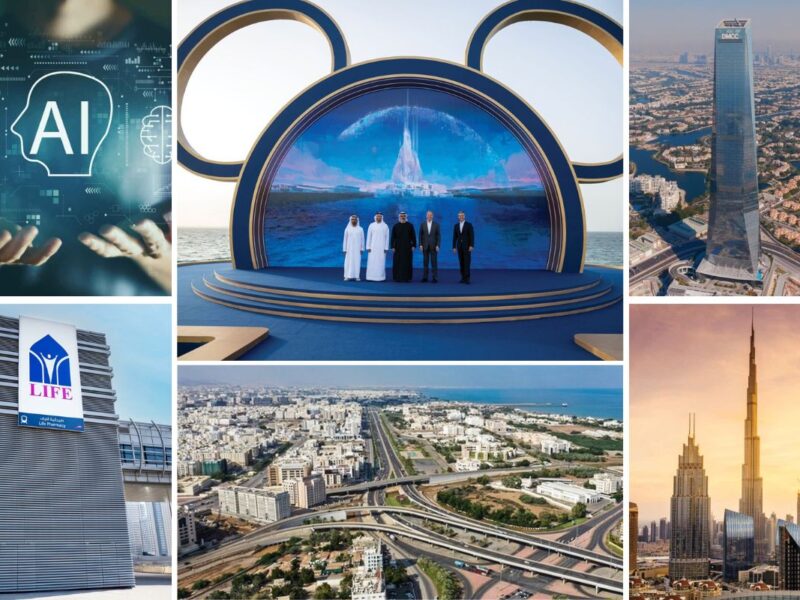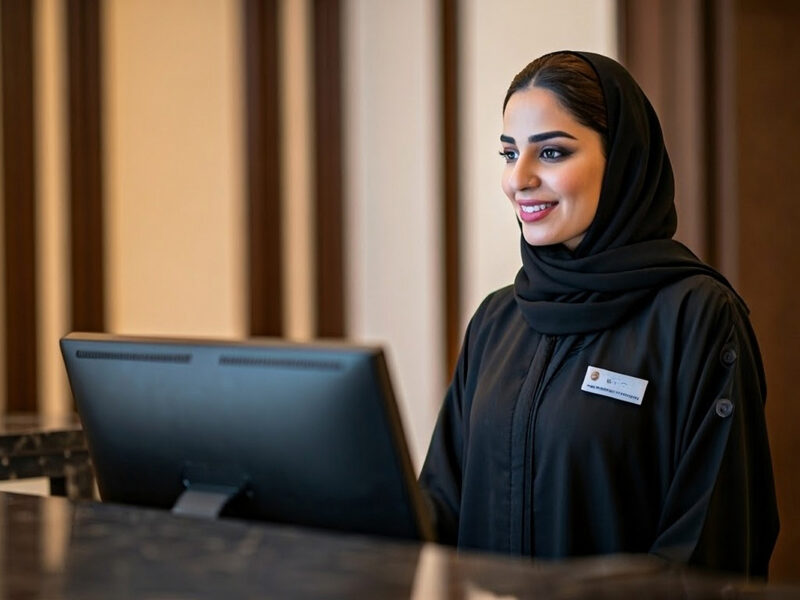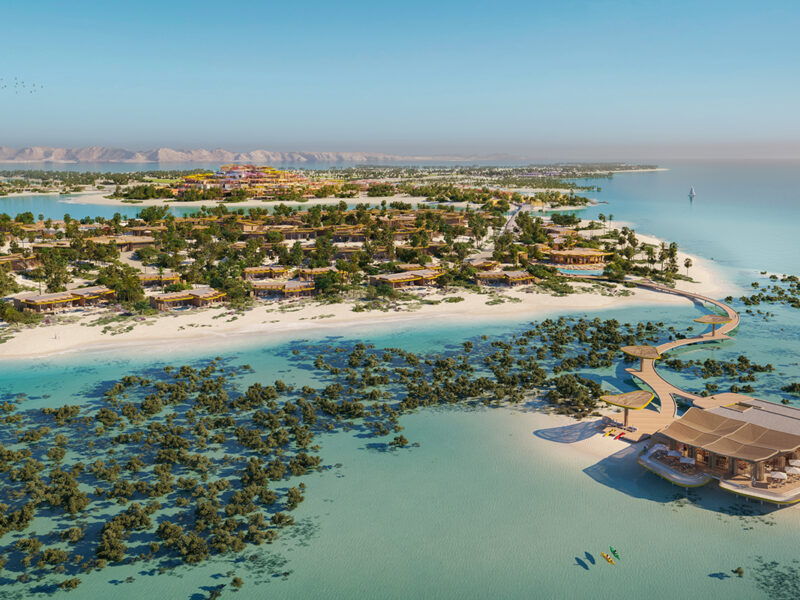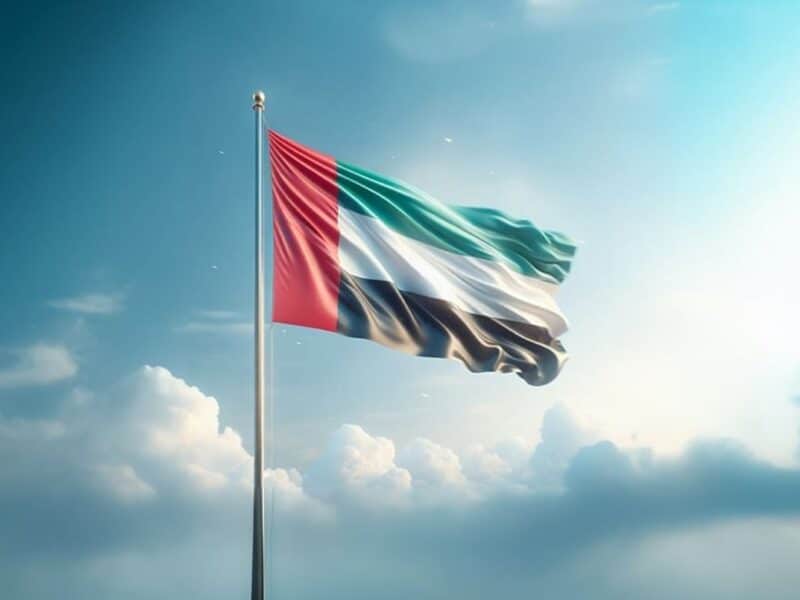At the northernmost corner of the African continent sits Tunisia – one of the best selling African destinations for European visitors thanks to its Mediterranean climate.
GCC tourism arrivals make a humble comparison, but with more flights serving Tunisia and a raft of GCC-based real estate companies investing in tourism projects, the destination is generating curiosity from Middle East-based holidaymakers and business travellers alike.
From the 1300 kilometre coastline to the vast stretches of Sahara desert in the interior, which accounts for more than 40% of the country’s land mass, Tunisia offers something for everyone – from a beach break to a cultural escape.
“Tunisia is by no means a new destination – our history goes back 3000 years – but for the GCC, it is a relatively new place to visit,” explains Mahmoud Dardoumi, director for Gulf, Tunisian National Tourism Office (TNTO).
“GCC residents began to come to Tunisia in 2001, immediately after 9/11. They stopped travelling to the US and Europe, so we immediately targeted them as an important source market for Tunisia.”
TNTO is now targeting Arabic nationals across the Middle East ,but in the GCC in particular, highlighting its Islamic heritage and new selling points such as thalassotherapy and golf tourism.
He says that of the 40,000 visitors that came to Tunisia from the Middle East in 2006, just 5000 were from GCC countries, but he expects this to increase by 30% by the end of 2007.
Attracting more than 6.5 million arrivals in 2006, tourism is Tunisia’s top foreign currency earner, and its main source of employment, according to the Ministry of Tourism.
Tourism Minister, Tijani Haddad, recently announced that tourist revenues increased by 10% in the first five months of 2007, putting it on track for a record year.
He says tourism revenue would grow by 8.6% this year to more than TND 3 billion (US $2.35 billion): “That’s the lowest expectation. The growth could be higher. We are energising efforts to diversify sector products and find new markets as we aim to stretch the high season across the whole season,” he explains.
Emirates Airline recently launched a direct service from Dubai to Tunis, which now operates five times weekly, and national carrier Tunis Air now flies direct from Tunis to Dubai (it used to go via Beirut) and launched direct services to Bahrain and Kuwait in June.
“This is going to have a very positive impact on visitor numbers,” explains TNTO’s Dardoumi.
TNTO has embarked on a region-wide marketing and advertising campaign as part of its plan to “re-evaluate” its tourism strategy.
“We wanted to rid ourselves of our seasonal problems and make tourism a year-round affair – that is why we are promoting things like thalassotherapy and spa breaks, golf and shopping tourism, Sahara tours, and cultural tourism,” Dardoumi explains.
“The target is to attract more GCC visitors in the winter season, so we have to make them know what is available.”
Tunismeetings and museums
The nation’s capital and largest city, Tunis, is the centre of business and commerce, and an important stopover for tourists exploring the country.
Sheraton Tunis Hotel & Tower is positioning itself as the leading business hotel in the city due to its location near the central diplomatic area.
And just a 10 minute drive from Tunis Carthage International Airport, the hotel is also in a prime position to capture the meetings and incentives market, according to Valentino Bertolini, area director, Starwood Hotels & Resorts Worldwide.
The property underwent a US $20 million refurbishment in 2003, which saw all 285 original rooms refurbished and 50 spacious deluxe rooms added.
“The hotel is well known by the Meetings Industry because of its high service level and meeting equipment,” says Bertolini. “We are receiving requests from numerous companies that wish to hold international congresses.”
Around 15% of all guests of the hotel hail from the Middle East, he adds.
Bertolini cites some of the reasons why travel agents should pitch Tunisia to clients: “It’s a very beautiful destination, considered one of the greatest and wealthiest cities in the Islamic World,” he says.
“Prices aren’t high compared to the same product [elsewhere in the region].”
Emirates Holidays introduced Tunisia to its brochure for the first time this year, following the launch of Emirates’ direct flights to Tunis.
Destination manager, Middle East, Africa and Indian Ocean, Merja Pollok, recommends visitors spend at least two or three full days in the capital in order to visit some of the cultural attractions.
Tunisia’s cultural heritage spans hundreds of sites and museums across the country and those of note include the vast collection of the prestigious National Museum of Bardo located in the suburbs of Tunis, she explains.
Out and about
“You could also combine Tunis with Hammamet; a traditional beach resort destination for Europeans in the summer time,” Pollok explains.
Six minutes from Hammamet, the new tourism development, Yasmine Hammamet, is spread across 278 hectares of land, along four kilometres of sandy coastline.
The resort boasts 44 hotels comprising 19,000 beds, 80% of which belong to the four- and five-star categories.
There are an additional 2000 residential units with a further 2000 beds in villas, apartments, holiday homes and time-share accommodation.
A 740-berth marina features traditional Tunisian-style accommodation units within a walled medina area, which also comprises covered markets, a theme park, casino, thalassotherapy centre, a promenade with shops, cafes, gardens, parks and an entertainment complex Other attractions in Yasmine Hammamet include two golf courses – Yasmine and Cytrus.
Some of Tunisia’s other leading coastal resorts can be found in the towns of Sousse, Monastir, Nabeul, and Tabarka, all of which have sandy beaches and crystal clear waters.
To the northeast of Tunis, the ruins of the ancient city of Carthage are also an important part of any itinerary, according to Pollok, while Dardoumi says Tabarka in the north, close to the Algerian border, is increasingly popular with the GCC market.
Mövenpick Ulysses Palace & Thalasso’s general manager, Pascal Mongeau, urges agents to look beyond the sun and the sea and explore some of the “less well-travelled aspects of this fascinating country”.
“The sun and sand appeal of the destination sells itself, but more should be made of the cultural and eco-tourism experience,” he says.
“Travel agents need to highlight of the diversity of the destination. Not only is Tunisia blessed with miles of unspoilt coastline and year-round sunshine, but it has a wealth of classical heritage such as ancient Roman ruins, which make for an exciting tourism offering for a broad range of travellers from the Gulf countries.”
Off the north coast of Tunisia, Djerba – the fabled island of the lotus-eaters from Homer’s Odysseus – is one of the most popular holiday destinations in the Mediterranean, according to Mongeau.
“At this stage the majority of our clients originate from the European countries,” he explains. “However, with the addition of new direct flights from the GCC by Tunisair, as well as the existing services from Emirates and Qatar Airways, we see a significant potential market coming out of the Middle East countries.”
According to Mongeau, the destination appeals to couples and families seeking beaches, historic sights, “fascinating architecture” and modern leisure facilities.
Tunisia has become renowned for its thalassotherapy treatments, a relatively new concept for the Gulf traveller according to Mongeau, but one that is catching on fast.
Mövenpick’s 3500m² Thalasso Centre features three indoor pools and extensive water-based treatment facilities, as well as a traditional Turkish hammam two saunas and 12 treatment rooms.
Foreign investment
Gulf investors continue to pour cash into Tunisia and the rest of North Africa where tourism development accounts for a massive percentage construction works.
Dubai-based real estate developer EMAAR is building the 442-hectare Marina Al Qussor worth US $1.88 billion on Tunisia’s eastern coastline.
The resort will include 4000 residential units on the waterfront, six luxury hotels, a 400-berth marina, yacht and beach clubs, spa resort, driving range and retail space.
Elsewhere, Sama Holding, the property arm of Dubai Holding recently announced plans to invest $14 million in a major tourism development to north of Tunis.
“These investments by Gulf companies are likely to make the GCC market feel even more at home when they visit,” Dardoumi concludes.








